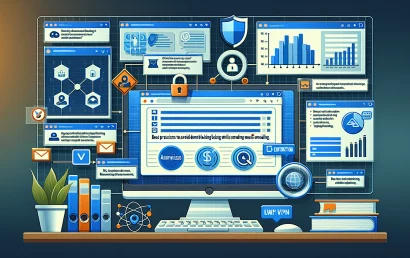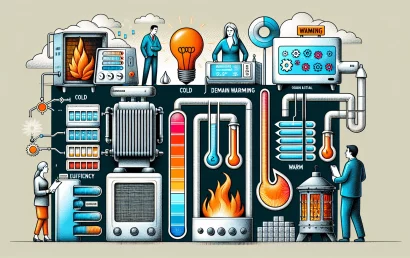Domain Warm-up for Email Marketing

Email marketing has become an essential tool for businesses looking to engage with their audience and drive conversions. However, one critical aspect that often gets overlooked is the importance of warming up your domain before launching any email campaigns. Domain warming is the process of gradually increasing your email sending volume to establish a positive reputation with Internet Service Providers (ISPs) and ensure that your messages land in the inbox rather than the spam folder.
In this article, we will explore the fundamentals of domain warming for email marketing, highlighting its significance and the steps you need to take to successfully warm up your domain. Understanding this process can make a significant difference in the effectiveness of your email campaigns and overall marketing strategy.
What is Domain Warming?
Domain warming involves gradually increasing the volume of emails sent from a new or dormant domain. This process helps build the domain's reputation with ISPs, which is crucial for ensuring high deliverability rates. When you send emails from a domain that has no history, ISPs may flag your messages as suspicious, leading to a higher chance of being marked as spam.
Why is Domain Warming Important?
The importance of domain warming cannot be overstated. A well-warmed domain can:
- Improve Deliverability: By establishing a positive sender reputation, your emails are more likely to reach the inbox.
- Enhance Engagement: When your emails land in the inbox, recipients are more likely to open and engage with your content.
- Reduce Bounce Rates: Warming up your domain helps you identify potential issues with your email list, reducing the risk of sending to invalid addresses.
«A strong sender reputation is the cornerstone of successful email marketing. Without it, even the best content may never reach its intended audience.» — Email Marketing Expert
Steps to Warm Up Your Domain
To effectively warm up your domain, follow these essential steps:
- Start Small: Begin by sending a low volume of emails to engaged users, gradually increasing the number as your reputation grows.
- Monitor Engagement: Keep track of open rates, click-through rates, and bounce rates to gauge how your emails are performing.
- Utilize Authentication Protocols: Implement SPF, DKIM, and DMARC protocols to verify your identity and improve your credibility with ISPs.
- Maintain List Hygiene: Regularly clean your email list to remove inactive or invalid addresses, ensuring you’re sending to engaged recipients.
By following these steps, you can effectively warm up your domain and set the stage for successful email marketing campaigns that resonate with your audience.
Main advantages and disadvantages
Advantages of Domain Warming
Warming up your domain comes with several significant benefits that can enhance your email marketing efforts:
- Increased Deliverability: A warmed-up domain is less likely to be flagged as spam, improving the chances of your emails reaching the inbox.
- Better Sender Reputation: Establishing a positive reputation with ISPs helps build trust, which is crucial for long-term email marketing success.
- Higher Engagement Rates: When your emails are delivered successfully, recipients are more likely to open, click, and interact with your content.
- Reduced Risk of Blacklisting: Gradually increasing your sending volume minimizes the risk of being blacklisted by ISPs due to sudden spikes in email activity.
Disadvantages of Domain Warming
While the benefits are substantial, there are also some challenges associated with domain warming:
- Time-Consuming Process: Warming up a domain requires patience and consistency, as it can take several weeks to achieve optimal results.
- Requires Monitoring: Continuous monitoring of engagement metrics is necessary to ensure that your warming strategy is effective and to make adjustments as needed.
- Potential for Mistakes: If not done correctly, domain warming can lead to poor deliverability, especially if you send too many emails too quickly.
- Initial Low Engagement: During the warming phase, you may experience lower engagement rates as you build your reputation, which can be discouraging.
Understanding both the advantages and disadvantages of domain warming is essential for creating a successful email marketing strategy that maximizes deliverability and engagement.
Thematic table
| Aspect | Description | Importance | Best Practices |
|---|---|---|---|
| What is Domain Warming? | The process of gradually increasing the volume of emails sent from a new or dormant domain. | Establishes a positive reputation with ISPs, ensuring better deliverability. | Start with a low volume of emails and increase gradually. |
| Benefits | Improved deliverability, better sender reputation, higher engagement rates, reduced risk of blacklisting. | Helps emails reach the inbox, increases trust with ISPs, and enhances overall campaign effectiveness. | Monitor engagement metrics and maintain list hygiene. |
| Challenges | Time-consuming, requires ongoing monitoring, potential for mistakes, initial low engagement. | Can lead to poor deliverability if not executed properly. | Be patient and adjust your strategy based on performance metrics. |
| Key Metrics to Monitor | Open rates, click-through rates, bounce rates, unsubscribe rates. | These metrics provide insight into how well your emails are performing. | Regularly review and analyze these metrics to refine your approach. |
| Email Authentication | Implementing SPF, DKIM, and DMARC protocols to verify your identity. | Enhances credibility and reduces the likelihood of emails being marked as spam. | Ensure proper setup of authentication protocols before sending emails. |
| List Hygiene | Regularly cleaning your email list to remove inactive or invalid addresses. | Improves engagement rates and reduces bounce rates. | Use tools to verify email addresses and segment your list based on engagement. |
| Warming Schedule | A structured plan for gradually increasing email volume over time. | Helps manage sending limits and maintain a steady reputation growth. | Create a timeline that outlines your sending volume increases. |
Let's summarize the category:
Domain warming is a crucial step in the email marketing process, particularly for businesses looking to establish a strong online presence. By gradually increasing the volume of emails sent from a new or dormant domain, marketers can build a positive reputation with Internet Service Providers (ISPs), ensuring that their messages are delivered to the inbox rather than the spam folder.
The benefits of domain warming are significant: improved deliverability, enhanced sender reputation, higher engagement rates, and a reduced risk of blacklisting. These advantages translate into more successful email campaigns that resonate with the target audience.
«A well-warmed domain is the foundation of effective email marketing. It not only ensures that your messages reach your audience but also fosters trust and engagement over time.» — Email Marketing Specialist
However, it is essential to recognize the challenges associated with domain warming. The process can be time-consuming and requires careful monitoring of key metrics such as open rates, click-through rates, and bounce rates. Additionally, implementing proper email authentication protocols and maintaining list hygiene are vital components of a successful warming strategy.
By following best practices and being patient throughout the warming process, marketers can lay the groundwork for successful email campaigns that drive engagement and conversions. Ultimately, investing time and effort into warming up your domain will yield long-term benefits and enhance the overall effectiveness of your email marketing initiatives.





